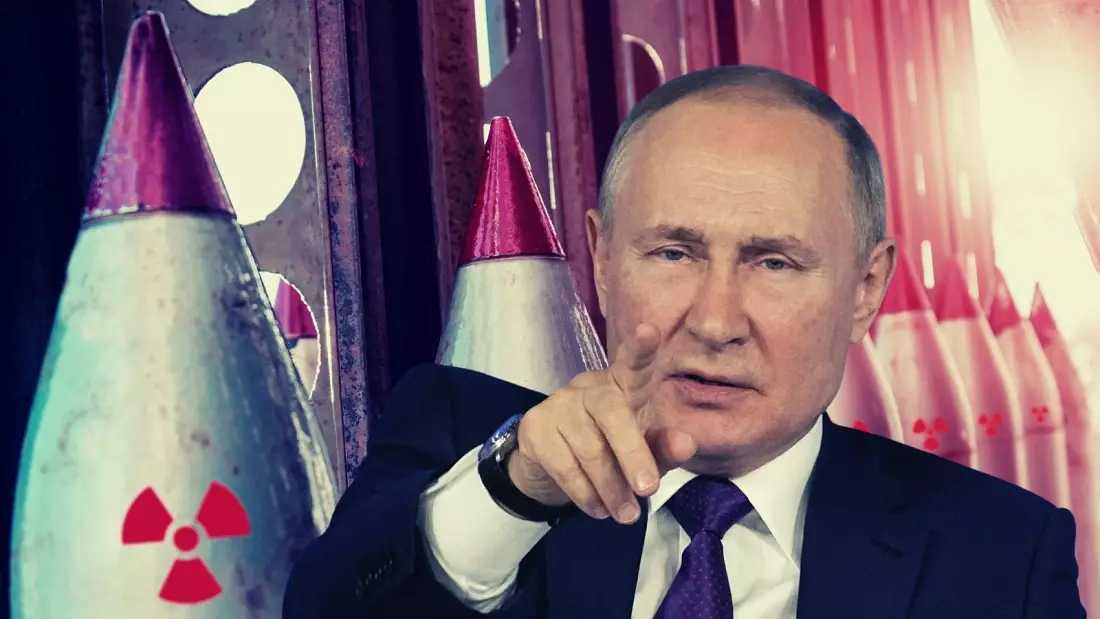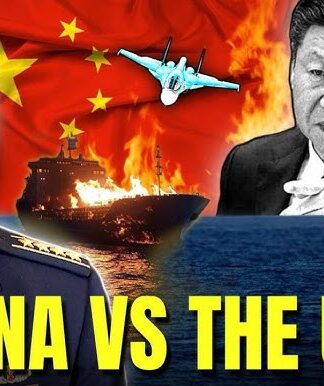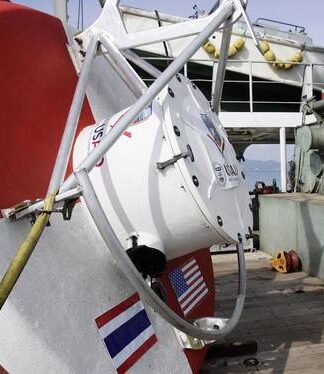BIZTECH NEWS
How destructive are Russia’s nuclear weapons and could it use them in the Ukraine war?
Russia’s smaller nuclear weapons are no small threat in the Ukraine war
Russia’s smaller nuclear weapons are no small threat in the Ukraine war – Copyright Composite image – Canva
By Natalie Huet • Updated: 23/09/2022 – 17:58
Over the past six months, Russia has repeatedly waved the threat of using nuclear force to have the upper hand in its war in Ukraine.
This week, President Vladimir Putin announced a partial mobilisation of reservists and issued another thinly-veiled threat of Moscow’s readiness to use nuclear weapons in the conflict.
His televised address came days after the Ukrainian army pulled off a surprise counteroffensive to recapture territory around its second-largest city, Kharkiv, in the east.
“I want to remind you that our country also has various means of destruction… and when the territorial integrity of our country is threatened, to protect Russia and our people, we will certainly use all the means at our disposal,” Putin said.
“It’s not a bluff,” he added.
What is Russia’s Poseidon nuclear drone and could it wipe out the UK in a radioactive tsunami?
The comments sparked alarm and outrage in the West, with US president Joe Biden accusing Russia of making “reckless” and “irresponsible” threats.
“A nuclear war cannot be won and must never be fought,” Biden told the United Nations General Assembly, repeating a Cold War pledge from both countries to abide by the 1968 Treaty on the Non-Proliferation of Nuclear Weapons.
So, what nuclear weapons does Russia have at its disposal, and how destructive could they be?
Strategic nuclear weapons
Nuclear weapons have never been used in a war since 1945, when the two atomic bombs dropped by the United States on Hiroshima and Nagasaki devastated the Japanese cities and instantly killed tens of thousands of people.
“That’s a 76-year tradition of non-use of nuclear weapons. And that is the single most important feature of the nuclear age, and we really want to keep it that way,” Nina Tannenwald, senior lecturer in international relations at Brown University in the US, told Euronews Next.
The horror of the bombings shocked the world into the age of nuclear deterrence, where global powers raced to develop such weapons, all the while knowing that their use would be catastrophic for humanity – and thus refraining from wielding them against one another.
Russian Defense Ministry Press Service via AP
File – This undated photo provided by the Russian Defense Ministry shows an Iskander-K missile launched during a military exercise at a training ground near St. PetersburgRussian Defense Ministry Press Service via AP
Nowadays, Russia has the world’s largest nuclear arsenal with around 6,257 nuclear warheads, while the United States admits to having 5,550, according to a January fact sheet by the Arms Control Association.
Of these, the so-called “strategic” weapons – those with the largest yield – are deployed on submarines, bombers and intercontinental ballistic missiles.
“Strategic nuclear weapons are the big city busters,” said Tannenwald, who authored a book on nuclear deterrence.
“These are unbelievably destructive weapons. If we got into a nuclear war with strategic weapons, that would be essentially the end of civilisation in both countries”.
What are hypersonic weapons and is Russia’s use of them in Ukraine the start of a new arms race?
Smaller tactical nuclear weapons
But some 2,000 of Russia’s nuclear warheads are short-range, so-called “tactical” nuclear weapons kept in storage facilities throughout the country.
These are much smaller nuclear weapons, designed to be used on the battlefield against troop formations, tanks, or military installations and bunkers.
These can be launched on the same short-range missiles Russia is currently using to bombard Ukraine, such as its Iskander-M ballistic missile, which has a range of about 500 km.
HIMARS: What are these high-tech rocket systems being sent to Ukraine and how crucial are they?
Tactical weapons were developed during the Cold War with the aim to “enhance” nuclear deterrence, said Tannenwald.
“Because the concern was, well if all you have is these really big city-busting weapons, people are going to be too afraid to use those, they’re just too destructive. And therefore, the deterrent threat at some point is less credible,” she said.
“The argument was: If you have these smaller, less destructive nuclear weapons, the threat to use them would be more credible because they’re less damaging and therefore deterrence would be stronger”.
The risk today, however, is that “they do appear to be more usable and therefore it makes it more likely that leaders could reach for them in a crisis”.
Russian Defense Ministry Press Service via AP
This photo taken from video provided by the Russian Defense Ministry on Feb. 19, 2022 shows a Russian Iskander-K missile launched during a military exerciseRussian Defense Ministry Press Service via AP
How destructive would these be?
Pavel Podvig, an expert on Russian nuclear forces and senior researcher at the United Nations Institute for Disarmament Research (UNIDIR), says there are very few scenarios in the battlefield where the immense power yielded by nuclear weapons might actually have a tactical purpose – for example, to destroy hardened underground structures or bunkers.
He argues that the main goal of tactical nuclear weapons remains a strategic one: to terrorise the enemy and gain the upper hand in a conflict.
“This whole notion of mini-nukes or limited strikes is just a way of finding a mission for those weapons and somehow justify their existence,” Podvig told Euronews Next.
“Their main mission is not attacking military targets. The main mission of these weapons is to demonstrate your willingness and readiness to attack and kill a lot, a lot of civilians”.
Variable-yield nuclear bombs
Most nuclear weapons nowadays are variable-yield, or “dial-a-yield,” meaning their amount of explosive energy can be dialled up or down depending on the military situation and objectives.
For example, the latest version of the B61 nuclear bomb developed by the US can release 0.3, 1.5, 10, or 50 kilotons of explosive energy. In comparison, the Hiroshima bomb packed a force of about 15 kilotons.
“We’re talking about still incredibly destructive weapons,” Tannenwald said.
“And they are nuclear weapons, so they would produce a mushroom cloud, a fireball. They would set fire to everything in sight. They would release massive amounts of radiation. So nobody should think that these are somehow actually more usable weapons”.

























